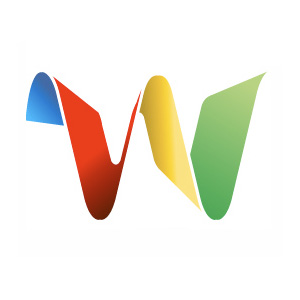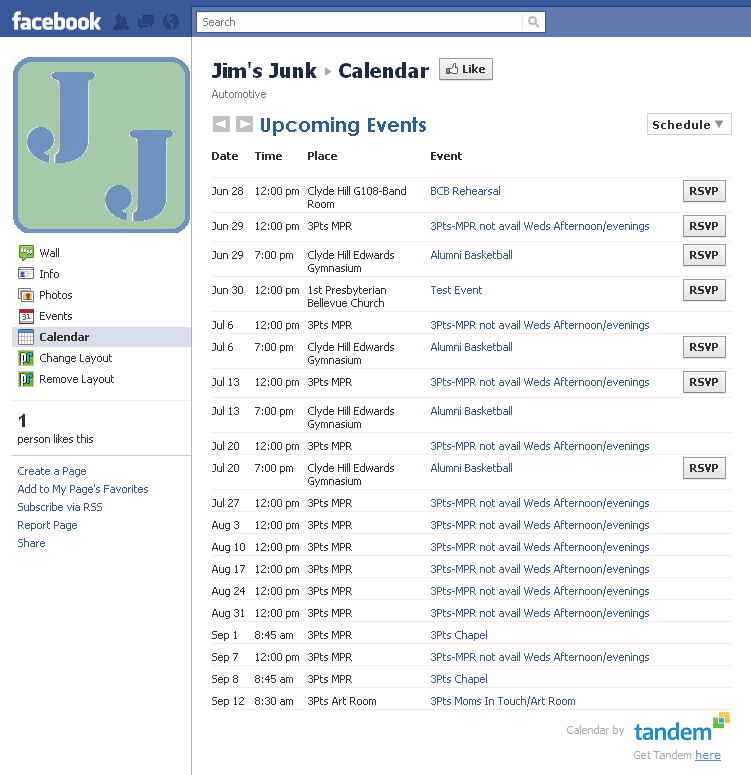Tandem Facebook App Update
The Tandem Facebook Application received an update today that allows it to utilize the Facebook RSVP system. With this update, users are now able to RSVP for events within the Tandem Facebook App. For schools and universities, thsi gives them the ability to create events in Tandem and easily be able to track attendees via the Dashboard in Tandem. Just another great feature we are giving are user to help grow strong communities!
Parent – School Communication
It is apparent to many that a strong involvement in a student’s education by a parent is integral to a successful education; what is not as apparent is how to do that. Below I have collected a couple different articles that go in depth about how to best facilitate communication between parents and schools.
Assessing Technology’s Role in Communication between Parents and Middle Schools – This article is more academic than the others but is still a great read. It goes in detail about the six different types of parental involvement as defined by the Epstein framework. For example, Type 3 requires schools to be proactive by inviting parents to participate in school activities. Wouldn’t that be a great use of Tandem for Schools?
Parent-Teacher Communication Advice from Veteran Teachers – This is a list of about ten tips from veteran teachers. Be sure to skim it and get some ideas!
Using Facebook Fan Pages in Education
Alt hough it may seem like a diversion, and as something that could run counter to education, Facebook offers a number of ways in which to enhance educational goals. Facebook’s genesis was actually tied to education—it started its existence as a way for college students to stay connected to each other and has only relatively recently been opened up to the rest of the world.
hough it may seem like a diversion, and as something that could run counter to education, Facebook offers a number of ways in which to enhance educational goals. Facebook’s genesis was actually tied to education—it started its existence as a way for college students to stay connected to each other and has only relatively recently been opened up to the rest of the world.
Develop Connections In the School Community
Facebook can help provide a greater level of group cohesion by creating connections between individuals through common interests. Whether allowing teachers to get to know each other better, or students and parents to get to know each other better, the more each member of any group knows about the other members, the more likely they are to find and develop connections.
Facilitates Conversations In the School Community
A fan page can be an excellent place for school staff, parents, and students to engage in conversation. This can be anything from sharing excellent learning resources to getting feedback from parents and students about new school programs.
A fan page could also be created by teachers for a specific class. Students could post homework questions that other students could help with. Teachers and students could also post useful links or embed videos on the class fan page. However one drawback is that anyone can join a fan page. If you want more control over your community, a Facebook group may be a better option. Administrators of a group can manage who is allowed into the group.
Also Facebook requires users be at least 13 years of age. So students in lower grade levels will not be able to participate. For these grade levels, a classroom blog may be a better tool.
Google Wave is a new service fr om the internet giant that has the potential to greatly enhance the way students communicate with each other when creating group projects for class. Wave combines many of the best features and benefits of other real time editing tools into a near total solution for group work and project development.
om the internet giant that has the potential to greatly enhance the way students communicate with each other when creating group projects for class. Wave combines many of the best features and benefits of other real time editing tools into a near total solution for group work and project development.
When Google Wave is launched a student or educator will immediately be presented with a window where waves are separated into viewing fields in the center and right hand side of the screen. A handy organizer (much like an e-mail folder lit) and contact’s list are present on the left side.
A button aptly labeled “New Wave” will start a new project, and this is where a teacher or student can really begin to utilize the features of this service. If a social studies class project requires four partners to work together to create a presentation, then each of the four students can be quickly added to a new Wave specific to their assignment.
Each participant can log in and out of the Google service from home, school, or a public library while conducting independent research. Videos, pictures, and other attachments can be uploaded directly into the Wave viewing field for quick and easy access to all source materials; this also provides an easy way to back-up all versions of a project!
Wave provides many handy features and keyboard shortcuts that make it an ideal choice for schools where students are encouraged to utilize laptops for note taking and homework assignments. Students can add materials, chat about the progress of a class project, and more after mastering a few quick commands provided in an introductory video to Wave compiled by Google (this video will show up in a sample wave the first time the service is accessed).
Teachers concerned about unevenly balanced workloads within a group project can easily view a Wave with the built-in playback feature and see the development of the Wave (and research) to ensure that all students are properly credited for work done. Teachers can also use this feature to ensure that all participants are behaving according to school rules when communicating with each other in the course of a classroom assignment and to make sure that no instances of cyber-bullying occur. Parents and teachers can also rest assured their students are safe, as Waves can only be viewed by contacts who have been cleared to contribute to the project.
Google Wave provides a tremendous amount of benefits to the teacher or student wishing to maintain a hub for real time project collaboration in a controlled environment. Classroom and school utilization of Google Wave will help students learn the collaborative skills needed to succeed in a business world that centers around social media integration and introduce them to practical applications of technology.
Google Wave demo video:
Using Technology To Build School Communities
If your school leadership is interested in building a larger and stronger community around your school, there are many online tools that can help.
Facebook
Facebook is the largest social network in the world with over 300 million active users and growing. Students have widely adopted Facebook as a tool to communicate with their friends, while the 35 and over age group is the fastest growing group on Facebook. A Facebook group for your school can be a place where students and parents can go to connect with other members of the community. Facebook groups also have a discussion board where members of the community can discuss topics.
Tandem
Tandem for Schools is an online school calendar that displays all the school’s events in one place. Parents and students can go to the real time online calendar to find out what events are going on, which increases participation. For instance, if parents know when and where PTSA meetings are being held, it is much easier to plan on attending. It also helps students find out about clubs that are meeting so they can participate in the extracurricular events they are interested in. When parents and students are more involved in school activities, it strengthens the school community.

Blogs
Blogs, which originated as online journals, have become powerful communication tools which can also be used by schools to build community. For instance teachers typically have a distant relationship with parents. They may talk a couple times a year at a parent-student conference. However, this is an important relationship that can be developed through online social tools like a blog. A teacher can post on their blog to explain what concepts they are studying, what students should be working on, and how parents can help. Parents can post comments on the blog posts, to provide feedback or discuss topics.
Twitter
Twitter, like many of the other tools, is a one to many communication tool. A principal can send a Tweet that will be read by parents, teachers, and students. It can also build community because of the retweet feature. Say you are following the principal who retweets (RT) a message by the PTSA (parent teacher student association) that they need volunteers. Followers of the principal can now follow the PTSA’s tweets and a new connection is created in the community. Twitter is most useful via SMS on your cellphone, where you can follow what people are talking about in your community and join the conversation, even if you are away from your computer.
Automating Parent Communications
Want to reduce incoming calls for event directions and times? Tandem for Schools provides two great communications benefits for your school/district and your parents.
First, every event listed on your Tandem calendar includes complete event details along with a link to Google maps and driving directions that are just a mouse click away.
Second, you can automate parent communications through email notification. Parents can subscribe and automatically receive any updates, location changes or cancellations. Parents can also use Tandem to synchronize with their Outlook calendar or online calendar. More technical users can subscribe to an RSS feed.
“From my experience this year, this site is absolutely fantastic. It should be even easier for me next year as the information rolls over from year to year.” – Jared D
We know from our customers that the better the communications with parents and the community, the higher the participation with the school. Using Tandem for Schools will provide your staff with more time and your parents with better real-time event information.
Want to learn more?
